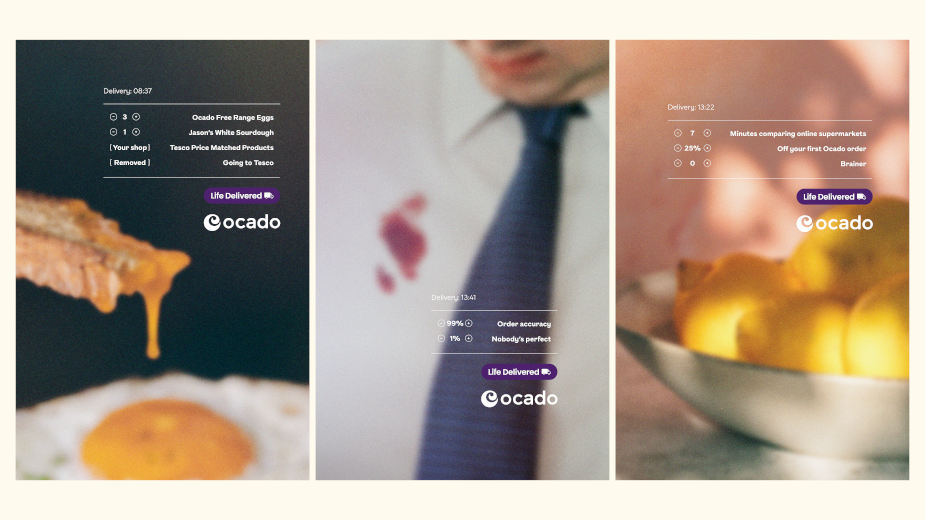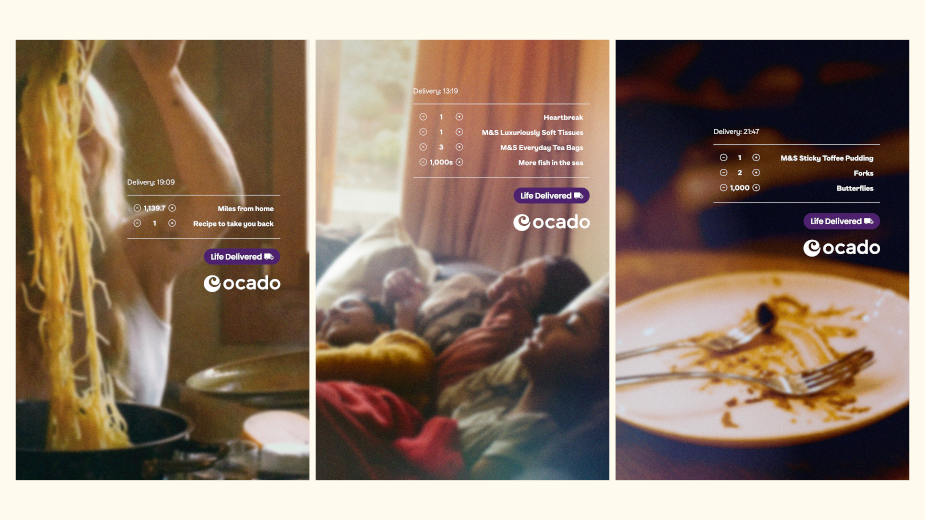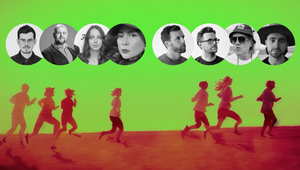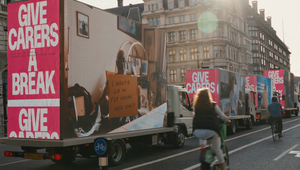
How Uncommon and Ocado Used Shopping Lists to Tell Human Stories

A shopping list is not only an accumulation of items but a product documenting the experience the person ordering was going through. With striking out-of-home pictures capturing those everyday experiences, ‘Shopping List Stories’ shines a spotlight on the person while the groceries take a backseat.
The campaign is part of Ocado’s ‘Life Delivered’ platform and was developed with the agency Uncommon. LBB’s Aysun Bora talked with its creative director, Adam Newby, to find out more about the project.
LBB> How did you come up with the personal stories concept?
Adam> It actually started from an anecdote from one of our team members’ partners, who was made an omelette when they couldn’t sleep as a kid. It was a simple act, using a couple of ingredients, but it meant so much. It was an obvious example of there being underlying emotion and true meaning in supermarket shopping. Every delivery is about life.
From there, it was about revealing the truth in everything. The list format is great for storytelling. It forces you to tell the most story with the least amount of information. We didn’t want them to feel formulaic, and we looked to push the different ways you could land emotion and keep it surprising.
What’s also great about this concept is that you don’t have to shy away from hard-working reasons-to-believe, which is an industry term for tangible evidence of a brand’s reliability. You can talk up to 25% off your first order, or delivery accuracy, in a way that is effective but has some feeling to it.

LBB> Could you tell us about the pitching process? How did you develop the idea as part of the ‘Life Delivered’ Platform?
Adam> The grocery category only talks about quality or price, but our segmentation research revealed that the most important criterion for grocery delivery is actually reliability. People want the certainty that they'll get a cucumber if they order a cucumber. Or the confidence that the supermarket has a wide enough range to find all the things they need in one place. They want to know that the products they get will have a great shelf life, and they want the clarity that their order will come at the time they've scheduled it.
While reliability sounds functional, it's powerful in a world where we’re already time poor and constantly spinning plates. We need a partner we can rely on to always deliver what we need, and bring a little joy into our lives through food. Our creative challenge was to highlight our reliability credentials, but in a way that felt human and relatable. To demonstrate that our point of difference enables the campaign to have more life.
LBB> How did you develop the style and design of the campaign?
Adam> One of Ocado’s key challenges is that people don’t know it’s an online supermarket. Some see it as a delivery platform for M&S exclusively (or Waitrose if they’re not aware of the switch made in 2020), some see it as an aggregate delivery platform for multiple grocery retailers, and some may know it’s a supermarket but assume there’s not a shop near them. One thing we were keen to do was to mirror the user interface of online grocery shopping carts, to cue the fact that Ocado is an online supermarket.
The consistent and structured format of these heartfelt stories is juxtaposed with imagery that reflects our vibrant day-to-day lives. The imagery shows life, the UI represents Ocado’s reliable delivery.
With every execution, we want people to do a little bit of work. There should be satisfaction in adding the elements together to paint a full picture.

LBB> What helped you during the idea development?
Adam> A lot of the stories went into research, which was really helpful. It helped us figure out what was essential for people to understand about the brand, like the role of Ocado and that Ocado is, in fact, an online supermarket.
LBB> Why did you choose OOH as a medium?
Adam> We wanted to reach everyday people, in the mundane moments. Commuting, for example, can feel like real drudgery. The ‘Life Delivered’ stories show that there is wonder and warmth in the everyday.
LBB> What was the production process like?
Adam> Once we figured out the intention, it was easy. These ads are all about the stories; the visuals support the stories, they don’t fight with them. We used stock and leaned into interesting crops, an analogue treatment and soft focus, to land the relatability. The less visual information you give people, the more they can project themselves into the story. That’s partly why we went for interesting, slightly haphazard crops, to help them feel more human and less considered (even though we spent hours figuring each one out!). This approach also means the idea was very scalable, without compromising on quality.
LBB> What has the response been like so far?
Adam> The response has been brilliant. It’s been great to see appreciation for not just the life moment stories, but also the reasons-to-believe work. The format allows for really reactive executions, too. People loved the Wimbledon execution that ran in print ads during the tournament.















